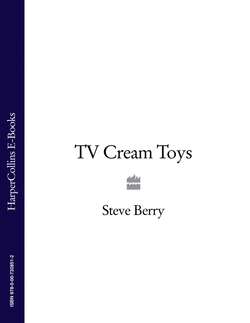Читать книгу TV Cream Toys Lite - Steve Berry - Страница 33
Corgi 007 Lotus Esprit Reinventing the wheel
ОглавлениеMuch has been written about the British die-cast toy industry, most of it in better-researched books than this one, but here’s a quick summary. Dinky were first to retool their WWII ordnance machinery, initially making scaled-down cars as background detail for Hornby trains (courtesy of a shared parent company in Meccano Ltd.). Lesney’s Matchbox brand hit the shops next, famous for tinderbox packaging, various classic car series and, later, the Superfast and Superking ranges. Then Corgi, setting up shop in Swansea (hence the name) and introducing separate plastic windows for their cars–an innovation that had passed the other two businesses by.
In the end, all three collapsed under pressure from a corporate US giant (Mattel and their bleedin’ Hot Wheels),1 but that’s a lesson history keeps teaching us over and over again. So much for facts. Most of the cars made by Dinky, Matchbox and Corgi have now ended up in dusty display cabinets, in museums and–the horror, the horror!–private collections. Was that really the point after half a century of miniature motoring? What happened to all the fun? Surely cars were made to be played with?
See also Tonka Trucks, Matsushiro Knight Rider Radio-Controlled Car, Hornby Railway Set
In fact, short of creating a traffic-jam on the lino by the patio doors, play scenarios were hard to come by. What really interested the Cream-era car buff–embryonic Clarksons all–was the toy that had an unexpected extra feature. Yer 70s’ Matchbox roster read like a roll-call at the Wacky Races (Blue Shark, Dodge Dragster and Turbo Fury to name but three), including dune buggies that the Monkees wouldn’t look out of place driving. Perennial favourite, the green hovercraft, remained and although Matchbox had experimented with S400 Streak Racing (plastic strips with loop-the-loops), the Adventure 2000 set was the real eye-opener. The vehicles themselves were a mishmash of sci-fi rip-offs (including Rocket Striker, which looked suspiciously like Dinky’sSHADO mobile), but you could also send off for a poster of the toys…which would come back with your name on it in big, blocky letters! Now that was impressive.2
Corgi, meanwhile, hitherto known for modern nuts-and-bolts stuff (branded articulated lorries, Routemasters, Land Rovers–especially for the Tarzan fold-out box set), aimed for a classier market with official film tie-ins. Yes, that does mean the camp Adam West Batmobile, but let’s not forget Bond. 007’s Goldfinger Aston Martin DB5 cemented Corgi’s reputation for attention to detail, with faithfully reproduced battering rams, bullet shield and that all-important ejector seat. Their Spy Who Loved Me Lotus was even better (but mainly ’cos the Esprit didn’t actually look like any car we’d ever seen before, even when it was in the film).
Stock cars Collectors’ catalogues listed new toy ranges, such as Adventure 2000 (below) and Space 1999 (bottom).
Dinky, thinking on their feet, had thrown their lot in with Gerry Anderson, creating tie-ins to his younger-demographic-skewed Supermarionation shows. A shrewd move, it turned out, as the mammoth success of their Joe 90 range in 1968 proved–they became the top-selling toys of that Christmas. Spectrum SPVs and Thunderbird 2s capitalised on the F.A.B. vibe. Even Space 1999 got the Dinky treatment, the Eagle Transporter mopping up some of T2’s leftover metallic green paint (‘cos ver kids don’t like ‘all white’ toys, right?).
Eventually, it was simplicity that did for the die-cast dinosaurs. The stoic, some might say plain, British brands simply didn’t inspire excitement (where were the go-faster stripes, the flame decals or the ability to transform into a fighting robot, say?). They weren’t big enough to have action figures in ’em (MASK) or small enough to hide in your mouth (Micro Machines). In fairness, Matchbox did have a desperate last attempt to liven up their standard car range by introducing the Motorcity packages (bumper-value multiple-car pile-ups and elaborate multistorey playsets), but it was all to no avail.
It all went tits up for Matchbox in 1982 (perhaps their equipment was requisitioned for the Falklands?), and the others soon followed in a great mess of mergers and acquisitions. The companies may be dead but the brand names live on. Never say die.
1 It’s as if we never learn, isn’t it? Maybe, just maybe, we Brits aren’t good enough at this stuff. That’s something to ponder over a Starbucks latte and a Krispy Kreme donut, eh?
2 The poster (inspired by those similarly personalised ‘El Cordobes’ bullfighter one-sheets, we’re saying–perhaps Mr Matchbox had been sunning himself on the Costa Brava in ’77?) was a poisoned chalice. You could request three names to be printed, presumably to keep siblings happy, but one had to be credited under the threatening alien baddie also pictured. Two heroes, one enemy. Oh, the arguments!
